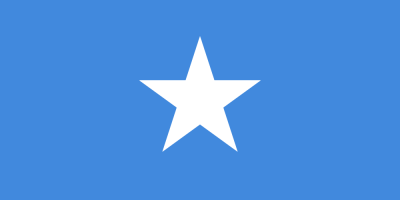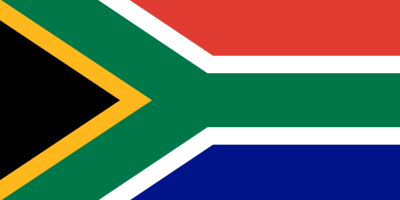Burundi flag color codes contains symbolic colors reflecting the country’s hopes and struggles. The main elements of the vibrant green, white and red banner are represented by specific Burundi flag color codes. This article outlines the official color formats and values to accurately reproduce this important African flag. You will find details on the HTML hexadecimal codes, RGB specifications, Pantone Matching System designations, HSL notations, CMYK percentages, HWB mixes and NCOL numbers comprising the correct hues for this national symbol. Whether you need to depict the Burundian colors digitally or print an accurate paper flag, these are the authoritative Burundi flag color codes to follow.
Table of Contents
What are the colors of Burundi flag?
The three colors in the flag of Burundi are:
Red: Represents the bloodshed and suffering experienced during Burundi’s history as well as the hope for the country’s development and progress.
Green: Represents the hope for the country’s economic growth mainly through agriculture. Green is seen as the color of the lush natural landscape of Burundi.
White: Represents peace and unity amongst the Burundian people after years of ethnic violence and discord. White epitomizes a harmonious society.
So in summary, the three colors are red, green and white – each holding important symbolic meaning for the Burundian nation and its aspirations.
Burundi flag color codes & Color Names:
RED
| Color Model | Value |
|---|---|
| HTML | #CE1126 |
| HEX | CE1126 |
| RGB | 206, 17, 38 |
| PANTONE | 186 C |
| HSL | 355°, 85%, 45% |
| CMYK | 0%, 92%, 82%, 19% |
| HWB | 355°, 0%, 19% |
| NCOL | 0.07, 0.85, 0.49 |
WHITE
| Color Model | Value |
|---|---|
| HTML | #FFFFFF |
| HEX | FFFFFF |
| RGB | 255, 255, 255 |
| PANTONE | |
| HSL | 0°, 0%, 100% |
| CMYK | 0%, 0%, 0%, 0% |
| HWB | 0°, 100%, 0% |
| NCOL | 0, 0, 1 |
GREEN
| Color Model | Value |
|---|---|
| HTML | #1F5E2E |
| HEX | 1F5E2E |
| RGB | 31, 94, 46 |
| PANTONE | 356 C |
| HSL | 134°, 50%, 24% |
| CMYK | 67%, 0%, 51%, 63% |
| HWB | 134°, 24%, 63% |
| NCOL | 0.32, 0.0, 0.37 |
What is the meaning of colors in the Burundi flag?
The meanings of the colors in the Burundi flag are:
Red: Symbolizes the bloodshed and suffering experienced through Burundi’s history, as well as the hope and vigilance for continued development.
Green: Represents hope for economic advancement, especially through agriculture. Also signifies the natural beauty and lush landscapes of Burundi.
White: Stands for peace, unity and harmony amongst the various ethnic groups in Burundi after years of discord. White reflects a vision of cooperation.
In summary:
- Red = Bloodshed, suffering, hope
- Green = Economic growth, agriculture, natural beauty
- White = Peace, unity, harmony
The vibrant red, green, and white emblem conveys Burundi’s national aspirations for progress through unity and reconciliation after a painful history. The symbolic colors reflect the resilience and vision of the Burundian people.
Explore More Flag Colors:
- Eritrea Flag Color Codes
- Djibouti Flag Color Codes
- Guinea-Bissau Flag Color Codes
- Uzbekistan Flag Color Codes
FAQs: Frequently Asked Questions:
What is Burundi famous for?
Burundi, a small landlocked country in East Africa, is known for several aspects, including:
Beautiful Landscapes: Burundi is known for its scenic landscapes, featuring lush green hills, valleys, and lakes. The country is often referred to as the “Heart of Africa” due to its central location on the continent.
Lake Tanganyika: One of the Great Lakes of Africa, Lake Tanganyika, is partially bordered by Burundi. The lake is known for its clear waters and diverse aquatic life.
Tea Plantations: Burundi is a significant producer of tea, and tea plantations are a common sight in the country. The tea industry plays a crucial role in the economy.
Cultural Heritage: Burundi has a rich cultural heritage, with traditional dance, music, and storytelling playing an essential role in the lives of its people. The country celebrates various cultural festivals and events.
Is Burundi a good place to live?
The suitability of Burundi as a place to live depends on various factors and individual preferences. Like any other country, Burundi has its strengths and challenges. Here are some aspects to consider:
Positive Aspects:
Scenic Landscapes: Burundi is known for its picturesque landscapes, featuring lush green hills, lakes, and natural beauty. The pleasant climate and beautiful surroundings can be appealing.
Cultural Richness: Burundi has a rich cultural heritage, with traditional music, dance, and rituals. The cultural diversity can provide a unique and enriching experience.
Affordable Cost of Living: Compared to some other African nations, Burundi generally has a lower cost of living, making it more affordable for residents.
Warm and Friendly People: Many visitors and expatriates note the warmth and friendliness of the Burundian people. The sense of community and hospitality is often appreciated.
Challenges:
Political Instability: Burundi has experienced periods of political instability and conflict. While the situation has improved in recent years, it’s essential to stay informed about the current political climate.
Economic Challenges: The country faces economic challenges, and job opportunities may be limited. Expatriates may find it challenging to secure employment.
Infrastructure: The infrastructure in Burundi, including roads and public services, may not be as developed as in some other countries. This can impact daily life and convenience.
What is the old name for Burundi?
Burundi has been known by various names throughout its history. In ancient times, the region that is now Burundi was part of different kingdoms and territories. One notable historical name associated with the area is “Urundi.” Urundi is often used to refer to the region before it gained independence and became the Republic of Burundi.
How many Indian people are in Burundi?
Demographic figures can change over time due to migration, economic activities, and other factors. For the most accurate and current information, it’s recommended to consult official sources such as national statistical agencies, embassy reports, or international organizations that track demographic data. You may also contact the Indian embassy or consulates in Burundi for any available community-related statistics or information.
Is Burundi a rich or poor country?
Burundi is generally considered one of the poorest countries in the world. The nation has faced significant economic challenges, including a reliance on agriculture, limited industrial development, and a high population density. Factors such as political instability, conflicts, and social issues have also contributed to the economic difficulties in the country.
Do I need a visa for Burundi?
Typically, travelers to Burundi need a visa to enter the country. Visa requirements may vary depending on your nationality and the purpose of your visit.
To obtain the latest and most accurate information regarding visa requirements for Burundi, you should check with the nearest Burundian embassy or consulate or visit the official website of the Burundian government. Additionally, you may contact the embassy or consulate of Burundi in your country for guidance on visa application procedures.
How many Muslims live in Burundi?
the majority of the population in Burundi practices Christianity, with a significant proportion being Roman Catholic. Islam is a minority religion in the country. The exact percentage of Muslims in the population can vary, and it’s important to note that demographic data can change over time.













